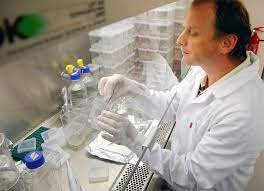Today LC-MS testing has become a routine technology in clinical laboratories and has begun to increase its presence in large and medium-size regional hospitals. Its application now includes hundreds of testing procedures, ranging from endocrinology and drug/toxicity screening to the analysis of rare esoteric analytes.
LC-MS analyses are more specific than traditional HPLC assays. Moreover, LC-MS testing consists of simpler workflows and provides higher throughput than HPLC methods. However, with higher throughput than GC-MS and HPLC testing, LC-MS falls behind automated immunoassays. With its growing popularity, several strengths and weaknesses have become evident. Let us focus on some key factors and considerations for LC-MS testing during drug development.
Key factors and considerations of LC-MS testing
A mass spectrometer measures the ratio of the mass vs. charge of the charged particles, abbreviated as m/q, m/Q, m/z, or m/Z. The mass spectrometer is made up of four components for its use in bioanalysis; a sample inlet, an ionization device, an ion path, and an ion detector. However, some of these components may be combined in a study instrument. For example, ionization and sample inlet are coupled together. In addition, each mass spectrometer needs two auxiliary components; a sample delivery device and a data reduction/signal processing device.
In clinical practice, almost all mass spectrometers are coupled with a GC or LC detection device. Such tandem designs have superseded the use of mass spectrometers in clinical analysis. LC-MS testing can perform five different sets of experiments; full scan, product ion scan, precursor ion scan, neutral loss scan, and selective reaction monitoring (SRM). Full scan, product ion scan, and precursor ion scan are largely used in the method development process, whereas SRM and neutral loss scan are the final methods employed after method development.
Things to consider for LC-MS analysis
As mentioned earlier, several limitations have become apparent in the use of LC-MS analysis. These limitations revolve around clinical aspects of; high manual workflows, complex operations and maintenance, sample throughput limitations, limits in detection specificity, and insufficient detection sensitivity.
The manual need for LC-MS testing and complex instrument operation maintenance has hugely affected the rapid adoption of LC-MS testing in small laboratories. Initial LC-MS installations are expensive and often require previous MS experience. Although it’s tempting to use LC-MS testing, the limitations to provide high throughput often nullify the wide range of benefits LC-MS analysis has to offer. Compared to thousands of tests performed in a clinical setting, LC-MS can only perform a small number of tests per day.
Without proper care with sample cleaning, it is impossible to achieve enhanced specificity. Moreover, with isobaric compounds, product-ions and precursors can be identical and pose a problem in the extraction process. Hence, additional care is needed while handling isobaric compounds.
Conclusion
Along with LC-MS testing, LC-MS/MS has been successfully used for a broad range of small analytes. LC-MS labs now use LC-MS and LC MS MS analysis for endocrine testing to perform highly sensitive and specific quantification of several large and small analytes in patient samples from its initial applications for newborn and biochemical genetic screening,





